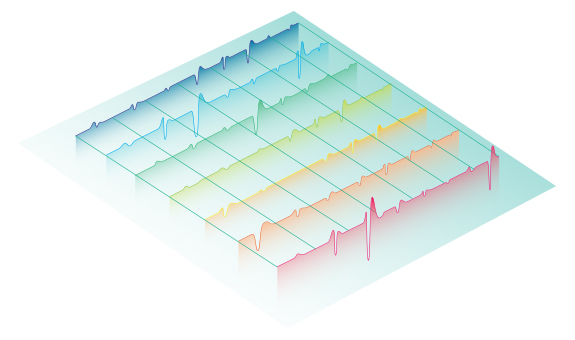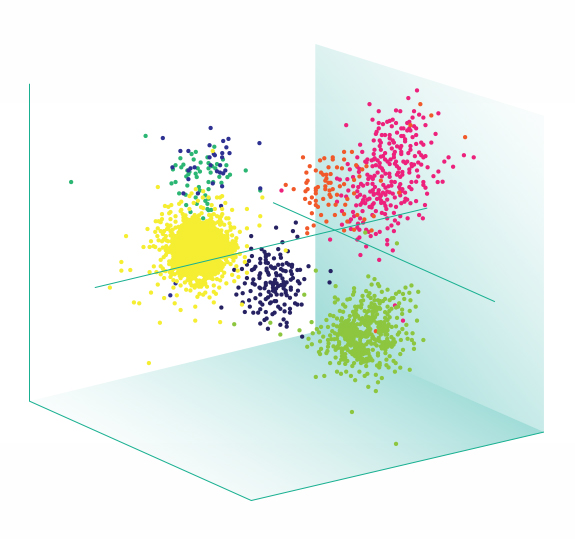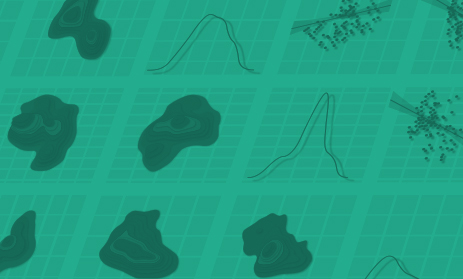
Electrical activity recorded from the brain (above) captures the firing patterns of neurons over time.
A human brain's 86 billion neurons can fire up to a quintillion times an hour, giving us an incredible ability to process complex information more quickly than most computers. Exactly how our brains use this electrical activity isn't clear, but scientists have spent decades recording and analyzing the signals neurons send, developing better and better tools to track what's going on in our brains. Now, scientists need better algorithms to analyze that data, says Leslie Greengard, director of the Simons Center for Data Analysis (SCDA).
Today, neuroscientists use tiny electrodes inserted into cultures of nerve cells or into the brains of living animals to record electrical signals. Early experiments used just one electrode, then five. Now, some use 18, others use just over 500, and soon some may record with more than 50,000. "That's a lot of data coming into the computer quickly, so we need an algorithm to sort it quickly and accurately," says SCDA senior research scientist Alex Barnett, associate professor of mathematics at Dartmouth College.
Neuroscientists' analysis of neurons' electrical activity is called spike sorting. Neurons' electrical activity comes from changes in concentrations of charged sodium and potassium ions flowing into and out of cells. These changes occur in less than a millisecond and can create slight increases in voltage, which are recorded by the electrodes. A computer displays these voltage increases as 'spikes' rising out of noisy, horizontal traces.

SCDA scientists develop advanced algorithms to analyze neurons' firing patterns, then cluster the data (above), in order to determine which neuron generated a particular spike in electrical activity.
Spike sorting, Greengard says, is all about figuring out which spike comes from which neuron.
Right now, neuroscientists use algorithms that sort spikes by shape. If one spike looks similar in shape to another, an algorithm reports that the spikes came from the same neuron. The current practice is for scientists to use their knowledge of the rules of the brain — principles such as the fact that a neuron has a recovery time of a couple of milliseconds before it can fire again — to make painstaking decisions about neuronal identities. That adds a human bias to the analysis, and it's slow, Barnett says.
Human analysis has another limitation, too. "Sorting by shape is pretty obvious for large spikes, but for smaller ones, it's harder," says SCDA senior data scientist Jeremy Magland. "Two people might look at the same data and come to completely different conclusions." Two different algorithms may also assign the same spike to different neurons. Such discrepancies make it difficult to reproduce spike-sorting results.
In response, Barnett, Greengard and Magland have published a new way to test the validity of current algorithms and are working on a standardized method that will permit neuroscientists to obtain confidence estimates on their results. In 2015, the team also developed an algorithm that efficiently scans data from hundreds of electrodes and sorts the data more accurately, substantially reducing the need for human intervention. Barnett, Greengard and Magland are using signal-processing tools so that the algorithm accurately labels spikes that come from the same neuron and separates those spikes from ones that come from other neurons, even when the neuron's firing amplitude varies over time. They also want to make the algorithm sensitive to smaller and smaller spikes, which are harder to separate from noise.
"The days of human spike sorting," Greengard says, "need to be over."



